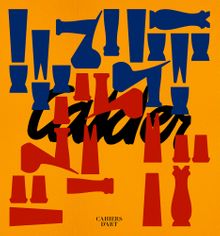| |||||||||||||||||||||||||||
ARTIST MONOGRAPHS
|
|
in stock $140.00 Free Shipping UPS GROUND IN THE CONTINENTAL U.S. |
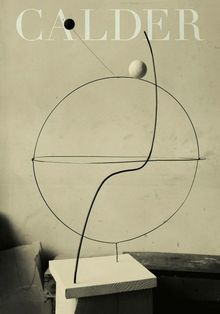 Calder: Sculpting Time
Calder: Sculpting Time
Published by Silvana Editoriale.
Edited by Carmen Gimenez, Ana Mingot.
Francisco Goya claimed in 1801 that “time also paints.” More than 200 years later, this quote, now turned maxim, could refer to the way in which time modifies how we relate to art. A more conceptual interpretation could also be held where time itself is the medium. Taken in this last interpretation, few artists have understood this notion better than Alexander Calder.
Sculpting Time explores time as a medium in Calder’s work: both as an integral part of his kinetic sculpture and as an external factor vis-à-vis the grand developments of the 20th century. This is best exemplified in his earliest sphériques as well as the Constellations (a term coined by Marcel Duchamp and James Johnson Sweeney in 1943) he created out of wood and wire during World War II, when sheet metal was not available. By introducing motion into a static art form, Calder implies the passage of time; thus, time also sculpts. This handsome clothbound volume, printed on Tatami paper, is filled with contemporary images of works from the 1930s to the 1970s, as well as archival photographs of Calder’s studio.
Alexander Calder (1898–1976) moved to Paris in the late 1920s, where he found himself at the center of the city’s artistic avant-garde. In 1930, he invented the mobile—an abstract sculpture made of independent parts that incorporate natural or mechanical movement. He would continue to explore the possibilities of this visual language for the rest of his career, eventually shifting to monumental constructions and public works.
PUBLISHER
Silvana Editoriale
BOOK FORMAT
Clth, 7.75 x 11.5 in. / 168 pgs / 106 color.
PUBLISHING STATUS
Pub Date 10/15/2024
Active
DISTRIBUTION
D.A.P. Exclusive
Catalog: FALL 2024 p. 62
PRODUCT DETAILS
ISBN 9788836657827 TRADE
List Price: $50.00 CAD $71.00
AVAILABILITY
In stock
in stock $50.00 Free Shipping UPS GROUND IN THE CONTINENTAL U.S. |
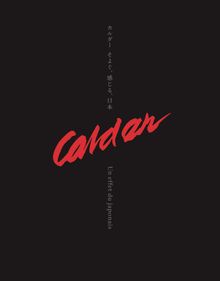 Calder: Un effet du japonais
Calder: Un effet du japonais
Published by Pace Publishing.
Introduction by Marc Glimcher. Text by Alexander S.C. Rower, Susan Braeuer Dam, Stephanie Goto, Jane Hirshfield, Jean McGarry, Akira Tatehata.
While Alexander Calder (1898–1976) never traveled to Japan, he was embraced by many of the country’s artists and poets during his lifetime. Published on the occasion of the first monographic exhibition of work by Calder to be mounted in Tokyo in nearly 35 years, Un effet du japonais explores how Calder’s art continues to resonate with Japanese culture and aesthetics.
Documenting 98 works from the collection of the Calder Foundation that span the 1930s to the 1970s, alongside extensive installation photography, this bilingual volume sheds new light on the artist’s mobiles, stabiles, standing mobiles, oil paintings and works on paper. In addition to extensive archival material, new texts by Alexander S.C. Rower, Susan Braeuer Dam, Stephanie Goto, Jean McGarry and Akira Tatehata explore the many through lines that connected Calder and his work to Japan, complemented by an introduction by Marc Glimcher and a poem by Jane Hirshfield.
PUBLISHER
Pace Publishing
BOOK FORMAT
Hardcover, 8.5 x 10.75 in. / 200 pgs / 123 color / 23 bw.
PUBLISHING STATUS
Pub Date 9/17/2024
Active
DISTRIBUTION
D.A.P. Exclusive
Catalog: FALL 2024 p. 118
PRODUCT DETAILS
ISBN 9781948701549 TRADE
List Price: $50.00 CAD $71.00 GBP £45.00
AVAILABILITY
In stock
in stock $50.00 Free Shipping UPS GROUND IN THE CONTINENTAL U.S. |
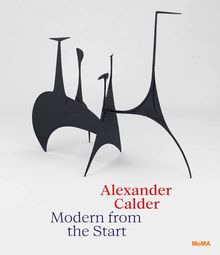 Alexander Calder: Modern from the Start
Alexander Calder: Modern from the Start
Published by The Museum of Modern Art, New York.
Edited with text by Cara Manes. Text by Alexander Calder, Alexander S. C. Rower.
Alexander Calder’s work first appeared in the Museum of Modern Art’s galleries in 1930, in the exhibition Painting and Sculpture by Living Americans. Over the next decades the artist’s connection with the Museum would be deep, productive and mutually beneficial. Calder cultivated friendships and working relationships with notable figures, including Alfred H. Barr Jr., the Museum’s founding director, and James Johnson Sweeney, with whom he collaborated on his expansive retrospective exhibition in 1943. His work is imprinted on MoMA’s early history, not only for its material and conceptual innovation but also for its presence at significant moments, such as a mobile made to hang over the lobby’s grand staircase on the occasion of the new Goodwin and Stone building (Lobster Trap and Fish Tail, which hangs there to this day); an elaborate candelabra to adorn the tables at a celebratory anniversary event; and a sculpture to fly off a flagpole to advertise the landmark exhibition Cubism and Abstract Art.
Alexander Calder: Modern from the Start celebrates this extraordinarily fertile relationship between an institution and an artist who was both an important creative partner and, with his magnificent gift of 19 works in 1966, a major donor. Through MoMA, Calder came to be known as a pioneer of modern sculpture, and through Calder, MoMA came to understand itself as an American museum of modern art.
After studying engineering, Alexander Calder (1898–1976) moved to Paris in the late 1920s, where he found himself at the center of the city’s artistic avant-garde. There, he developed his Cirque Calder, a performance artwork comprising dozens of miniature handmade objects, and a group of standalone figurative works in wire. Turning toward abstraction in 1930, Calder invented the mobile—an abstract sculpture made of independent parts that incorporate natural or mechanical movement. He would continue to explore the possibilities of this visual language for the rest of his career, eventually shifting to monumental constructions and public works.
PUBLISHER
The Museum of Modern Art, New York
BOOK FORMAT
Hardcover, 9 x 10.5 in. / 144 pgs / 113 color.
PUBLISHING STATUS
Pub Date 3/2/2021
Active
DISTRIBUTION
D.A.P. Exclusive
Catalog: SPRING 2021 p. 31
PRODUCT DETAILS
ISBN 9781633451162 TRADE
List Price: $45.00 CAD $63.00
AVAILABILITY
In stock
in stock $45.00 Free Shipping UPS GROUND IN THE CONTINENTAL U.S. |
 Calder: Small Sphere and Heavy Sphere
Calder: Small Sphere and Heavy Sphere
Published by Pace Publishing.
Text by Alexander S. C. Rower, Susan Braeuer Dam, Arnauld Pierre, Noam M. Elcott, Stephanie Goto. Epilogue by Marc Glimcher.
With multiple essays by renowned scholars, artwork and installation images, and a suite of historic photographs of Alexander Calder’s (1898-1976) work taken by Marc Vaux in the 1930s, this catalog traces the breadth of Calder’s innovative practice, leading up to his conception of the mobile in 1931—an unprecedented form of kinetic sculpture that radically altered the trajectory of modern art.
Alexander Calder is one of the most acclaimed and influential sculptors of the 20th century. He is renowned for his invention of wire sculpture—coined by critics as “drawings in space”—and the mobile, a kinetic sculpture of suspended abstract elements whose actual movement creates ever-changing compositions. Also included is a lively series of drawings Calder made at the Bronx and Central Park zoos of animals in motion, which recall his wire sculptures of the same subjects.
PUBLISHER
Pace Publishing
BOOK FORMAT
Hardcover, 9.5 x 11 in. / 151 pgs / 50 color / 63 bw.
PUBLISHING STATUS
Pub Date 6/2/2020
Out of stock indefinitely
DISTRIBUTION
D.A.P. Exclusive
Catalog: FALL 2020 p. 129
PRODUCT DETAILS
ISBN 9781948701259 TRADE
List Price: $70.00 CAD $98.00 GBP £62.00
AVAILABILITY
Not available
STATUS: Out of stock indefinitely. |
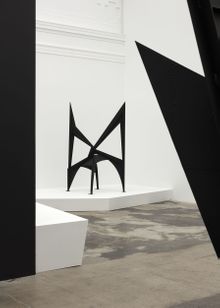 Calder: Nonspace
Calder: Nonspace
Published by Hauser & Wirth Publishers.
Text by Stephanie Goto, Andrew Berardini, James Jones.
Calder: Nonspace takes its title from a 1963 essay by American novelist James Jones, written after his encounter with a series of large-scale sculptures at Alexander Calder’s studio in Saché, France. In his essay, reprinted in this book, Jones astutely describes Calder’s deep understanding of architectural and natural environments, which enabled him to reorder a viewer’s perception of the world surrounding his sculptures.
This catalog explores this angle on Calder’s monumental vision by documenting an installation at Hauser & Wirth Los Angeles. It consists of more than 30 stabiles, mobiles and standing mobiles woven through a specially designed environment created by New York architectural designer Stephanie Goto (whose projects include the New York restaurant Piora and the apartment of chef Daniel Boulud), along with five large-scale works set outdoors.
Goto also contributes an essay that explores the transformation of a classical gallery into a unified experience, and an essay by Andrew Berardini looks at the moments in Calder’s work where space is transformed by art.
PUBLISHER
Hauser & Wirth Publishers
BOOK FORMAT
Hardcover, 12.5 x 10.25 in. / 88 pgs / illustrated throughout.
PUBLISHING STATUS
Pub Date 7/23/2019
Active
DISTRIBUTION
D.A.P. Exclusive
Catalog: FALL 2019 p. 152
PRODUCT DETAILS
ISBN 9783906915364 TRADE
List Price: $50.00 CAD $69.95
AVAILABILITY
Out of stock
STATUS: Out of stock Temporarily out of stock pending additional inventory. |
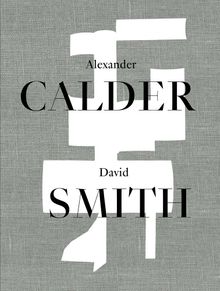 Alexander Calder / David Smith
Alexander Calder / David Smith
Published by Hauser & Wirth Publishers.
Introduction by Alexander S.C. Rower, Peter Stevens. Text by Elizabeth M. Turner, Sarah Hamill.
Two of the most important American sculptors of the 20th century, Alexander Calder (1898–1976) and David Smith (1906–65) pushed sculptural practice in metal to new heights over the course of their careers. Bringing together pivotal sculpture of a historic moment in American art history, this monograph also features photographs from Italian Ugo Mulas, who met both sculptors in Spoleto in 1962 and documented them throughout his life. This publication is released on the occasion of an exhibition at Hauser & Wirth Zürich from June 10 to September 17, 2017.
PUBLISHER
Hauser & Wirth Publishers
BOOK FORMAT
Hardcover, 9.5 x 11.75 in. / 112 pgs / 33 color / 36 bw.
PUBLISHING STATUS
Pub Date 1/23/2018
Active
DISTRIBUTION
D.A.P. Exclusive
Catalog: SPRING 2018 p. 127
PRODUCT DETAILS
ISBN 9783906915036 TRADE
List Price: $50.00 CAD $67.50
AVAILABILITY
In stock
in stock $50.00 Free Shipping UPS GROUND IN THE CONTINENTAL U.S. |
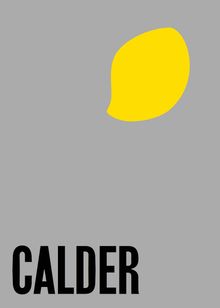 Alexander Calder: From the Stony River to the Sky
Alexander Calder: From the Stony River to the Sky
Published by Hauser & Wirth Publishers.
Text by Susan Braeuer Dam, Jessica Holmes.
Featuring over 90 works by Alexander Calder (1898–1976) including paintings, mobiles, stabiles, jewelry, domestic objects and furniture, plus six monumental outdoor sculptures, this catalog vividly illustrates a walkthrough of an ambitious exhibition in the British countryside in Somerset. Drawing a parallel with Calder’s longtime home and studio in Roxbury, Connecticut, it includes many previously unseen works.
An essay by Jessica Holmes focuses on the artist’s handcrafted domestic objects, offering insight into Calder’s life and inventive practice. Susan Braeuer Dam focuses on Calder’s move to Roxbury in 1933 and the shifts in his work, drawing upon themes of nature, process and monumentality, specifically as related to the 1934 sculptures surveyed here.
PUBLISHER
Hauser & Wirth Publishers
BOOK FORMAT
Paperback, 7.75 x 11.75 in. / 120 pgs.
PUBLISHING STATUS
Pub Date 9/25/2018
Active
DISTRIBUTION
D.A.P. Exclusive
Catalog: SPRING 2019 p. 125
PRODUCT DETAILS
ISBN 9783906915258 TRADE
List Price: $40.00 CAD $62.00
AVAILABILITY
In stock
in stock $40.00 Free Shipping UPS GROUND IN THE CONTINENTAL U.S. |
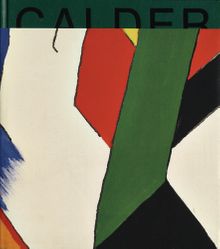 Alexander Calder: Discipline of the Dance
Alexander Calder: Discipline of the Dance
Published by RM/Fundación Jumex Arte Contemporáneo.
Text by Alexander S. C. Rower, José Esparza Chong Cuy, Juan García Ponce, José Revueltas.
PUBLISHER
RM/Fundación Jumex Arte Contemporáneo
BOOK FORMAT
Hardcover, 9.75 x 11 in. / 430 pgs / 200 color.
PUBLISHING STATUS
Pub Date 2/23/2016
Out of print
DISTRIBUTION
D.A.P. Exclusive
Catalog: SPRING 2016 p. 163
PRODUCT DETAILS
ISBN 9788416282265 TRADE
List Price: $55.00 CAD $72.50
AVAILABILITY
Not available
STATUS: Out of print | 00/00/00 For assistance locating a copy, please see our list of recommended out of print specialists |
 Transparence: Calder Picabia
Transparence: Calder Picabia
Published by Hatje Cantz.
Text by George Baker, Arnauld Pierre.
PUBLISHER
Hatje Cantz
BOOK FORMAT
Hardcover, 10.25 x 13.5 in. / 126 pgs / 78 color.
PUBLISHING STATUS
Pub Date 2/23/2016
Out of stock indefinitely
DISTRIBUTION
D.A.P. Exclusive
Catalog: SPRING 2016 p. 163
PRODUCT DETAILS
ISBN 9783775740524 TRADE
List Price: $95.00 CAD $127.50
AVAILABILITY
Not available
STATUS: Out of stock indefinitely. |
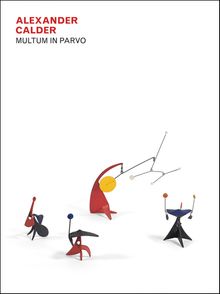 Alexander Calder: Multum in Parvo
Alexander Calder: Multum in Parvo
Published by Dominique Lévy.
Text by Paul Goldberger, Jed Perl, Karl Shapiro, John Updike.
As its title--translating to “much in little”--implies, the volume features over 40 rare small-scale sculptures, ranging from the size of a thumb to 30 inches tall, all of which feature the same physical qualities as Calder’s largest mobiles in the most miniature of detail.
In addition to archival material, installation photography of the sculptures in the environment designed for them by architects Santiago and Gabriel Calatrava, and original architectural sketches, the book also includes commissioned essays by Jed Perl, art historian and author currently at work on the first full-length biography of Alexander Calder, and Paul Goldberger, Pulitzer Prize-winning architecture critic, as well as poems by Karl Shapiro and John Updike.
PUBLISHER
Dominique Lévy
BOOK FORMAT
Hardcover, 10 x 13.5 in. / 164 pgs / 62 color / 18 duotone.
PUBLISHING STATUS
Pub Date 7/26/2016
Active
DISTRIBUTION
D.A.P. Exclusive
Catalog: FALL 2016 p. 101
PRODUCT DETAILS
ISBN 9780986060656 TRADE
List Price: $60.00 CAD $79.00 GBP £53.00
AVAILABILITY
Out of stock
STATUS: Out of stock Temporarily out of stock pending additional inventory. |
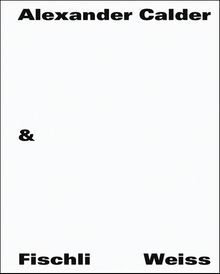 Alexander Calder & Fischli / Weiss
Alexander Calder & Fischli / Weiss
Published by Hatje Cantz.
Text by Theodora Vischer, et al.
At first glance, both positions could hardly be more different; later, however, they proved to be two sides of the same coin, the result of different perspectives on the same theme at different times. This elaborately designed, richly illustrated catalogue with accompanying essays provides insight into both oeuvres.
PUBLISHER
Hatje Cantz
BOOK FORMAT
Hardcover, 9.75 x 12 in. / 272 pgs / 180 color.
PUBLISHING STATUS
Pub Date 8/23/2016
Out of stock indefinitely
DISTRIBUTION
D.A.P. Exclusive
Catalog: FALL 2016 p. 105
PRODUCT DETAILS
ISBN 9783775741279 TRADE
List Price: $85.00 CAD $112.50
AVAILABILITY
Not available
STATUS: Out of stock indefinitely. |
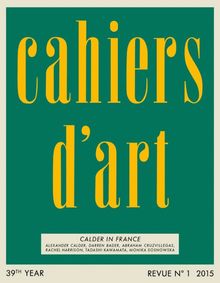 Cahiers d'Art: Calder in France
Cahiers d'Art: Calder in France
39th Year
Published by Cahiers d'Art.
Edited by Staffan Ahrenberg, Sam Keller, Hans Ulrich Obrist, Anya Bondell. Introduction by Alexander S. C. Rower. Text by Ugo Mulas, Georges Mounin, Alfred Pacquement, et al.
“Calder reached his artistic maturity in 1920s Paris at a time when the city was very much the center of burgeoning avant-garde experimentation. His early years in Paris marked the beginning of a lasting love for France, where he met many of his lifelong artist friends,” explains Alexander S. C. Rower, grandson of the artist and president of the Calder Foundation. “Calder’s time in France, and his continued legacy there, constitutes a natural and rich subject for study.”
The revue undertakes an in-depth exploration of the significant years Calder spent in France, beginning with his crucial years in Paris from 1926 to 1933, during which time the artist firmly established his imprint on the avant-garde scene. After the war, Calder spent significant periods of time in Paris in 1946, in Aix-en-Provence in 1953, and finally in Saché in the Loire Valley, where he would design his final monumental studio in 1963. The revue unveils the studios where Calder lived and worked through archival documentation, offering deeper insight into his work in each of these enigmatic places.
Calder in France also celebrates the legacy of Calder’s Saché studio over the past 25 years as a residency program for contemporary artists. Over the past quarter century, fifty artists have worked in Calder’s studio, including Martin Puryear, Tara Donovan, Ernesto Neto and Sarah Sze. The revue contains interviews with Tadashi Kawamata, Abraham Cruzvillegas and Rachel Harrison, a selection of images of past residents’ work, and a special portfolio of models for new sculptures by 2014 resident Monika Sosnowska. The revue also highlights Calder’s relationship with former Cahiers d'Art publisher Christian Zervos through the reproduction of several pivotal essays on Calder published during the artist’s lifetime.
Images of the artist’s work are published alongside seminal texts by Alexander S. C. Rower, and Susan Braeuer Dam, Director of Research and Publications at the Calder Foundation. The revue is also enriched with contributions by Alfred Pacquement, former Director of the Musée National d’Art moderne, Centre Pompidou and President of the Board of the Atelier Calder; Raphaël Bouvier, Curator at the Fondation Beyeler; Robert Rubin, architectural historian; and Hans-Ulrich Obrist, Co-Director of the Serpentine Gallery in London. Accompanying the texts are defining photographs of Calder and his work by Ugo Mulas and also Agnès Varda, with an interview by curator and art historian Joan Simon.
PUBLISHER
Cahiers d'Art
BOOK FORMAT
Slip, pbk, 9.75 x 12.5 in. / 194 pgs / 143 color.
PUBLISHING STATUS
Pub Date 10/20/2015
Active
DISTRIBUTION
D.A.P. Exclusive
Catalog: Publisher Backlist
PRODUCT DETAILS
ISBN 9782851171818 SDNR40
List Price: $100.00 CAD $150.00
AVAILABILITY
In stock
in stock $100.00 Free Shipping UPS GROUND IN THE CONTINENTAL U.S. |
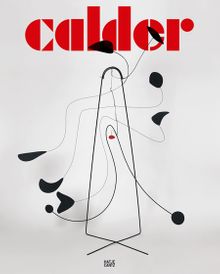 Alexander Calder: Trees
Alexander Calder: Trees
Naming Abstraction
Published by Hatje Cantz.
Edited by Delia Ciuha. Foreword by Sam Keller, Oliver Wick. Text by Oliver Wick.
PUBLISHER
Hatje Cantz
BOOK FORMAT
Paperback, 9.75 x 12 in. / 72 pgs / 28 color.
PUBLISHING STATUS
Pub Date 1/31/2014
Out of print
DISTRIBUTION
D.A.P. Exclusive
Catalog: SPRING 2014 p. 127
PRODUCT DETAILS
ISBN 9783775737104 TRADE
List Price: $45.00 CAD $60.00
AVAILABILITY
Not available
STATUS: Out of print | 00/00/00 For assistance locating a copy, please see our list of recommended out of print specialists |
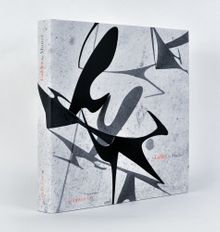 Calder by Matter
Calder by Matter
Published by Cahiers d'Art/Calder Foundation.
Edited by Alexander S.C. Rower. Contributions by Jed Perl, John T. Hill.
Photographer and graphic designer Herbert Matter, a close friend of Alexander Calder, had the privilege of photographing the artist’s sculptures at different stages of their realization and capturing Calder at work in his studios and in his Roxbury, Connecticut, home. Calder by Matter offers a new perspective on the sculptor’s life and work, presenting over 300 photographs of the artist and his family, many of which are previously unpublished.
PUBLISHER
Cahiers d'Art/Calder Foundation
BOOK FORMAT
Hardcover, 12 x 12 in. / 300 pgs / 300 color.
PUBLISHING STATUS
Pub Date 10/21/2014
Out of stock indefinitely
DISTRIBUTION
D.A.P. Exclusive
Catalog: Publisher Backlist
PRODUCT DETAILS
ISBN 9782851171016 SDNR40
List Price: $90.00 CAD $128.00
AVAILABILITY
Not available
STATUS: Out of stock indefinitely. |
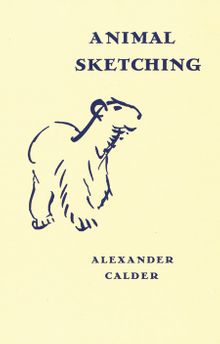 Alexander Calder: Animal Sketching
Alexander Calder: Animal Sketching
Published by Editions Dilecta.
Preface by Arnauld Pierre.
PUBLISHER
Editions Dilecta
BOOK FORMAT
Hardcover, 6.25 x 9 in. / 104 pgs / 140 bw.
PUBLISHING STATUS
Pub Date 10/31/2009
Out of stock indefinitely
DISTRIBUTION
D.A.P. Exclusive
Catalog: FALL 2009 p. 86
PRODUCT DETAILS
ISBN 9782916275536 TRADE
List Price: $45.00 CAD $60.00
AVAILABILITY
Not available
STATUS: Out of stock indefinitely. |
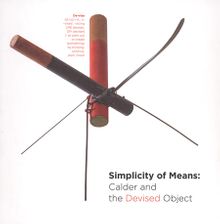 Simplicity of Means: Calder and the Devised Object
Simplicity of Means: Calder and the Devised Object
Published by Jonathan O'Hara Gallery.
Foreword by Jonathan O'Hara. Preface by Jessica Holmes.
PUBLISHER
Jonathan O'Hara Gallery
BOOK FORMAT
Hardback, 9.25 x 9 in. / 80 pgs / 102 color / 23 bw.
PUBLISHING STATUS
Pub Date 7/1/2008
Out of print
DISTRIBUTION
D.A.P. Exclusive
Catalog: FALL 2008 p. 108
PRODUCT DETAILS
ISBN 9780974075167 TRADE
List Price: $30.00 CAD $35.00
AVAILABILITY
Not available
STATUS: Out of print | 00/00/00 For assistance locating a copy, please see our list of recommended out of print specialists |
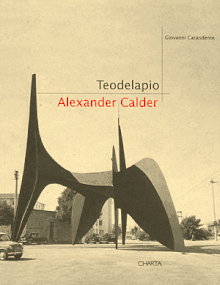 Alexander Calder's Teodelapio At Spoleto
Alexander Calder's Teodelapio At Spoleto
Published by Charta.
Artwork by Alexander Calder. Edited by Giovanni Carandente.
PUBLISHER
Charta
BOOK FORMAT
Paperback, 8.25 x 10.6 in. / 104 pgs / 10 color / 34 bw / 57 duotone.
PUBLISHING STATUS
Pub Date 9/2/1996
No longer our product
DISTRIBUTION
D.A.P. Exclusive
Catalog: FALL 1996
PRODUCT DETAILS
ISBN 9788881580750 TRADE
List Price: $29.95 CAD $35.00
AVAILABILITY
Not available
